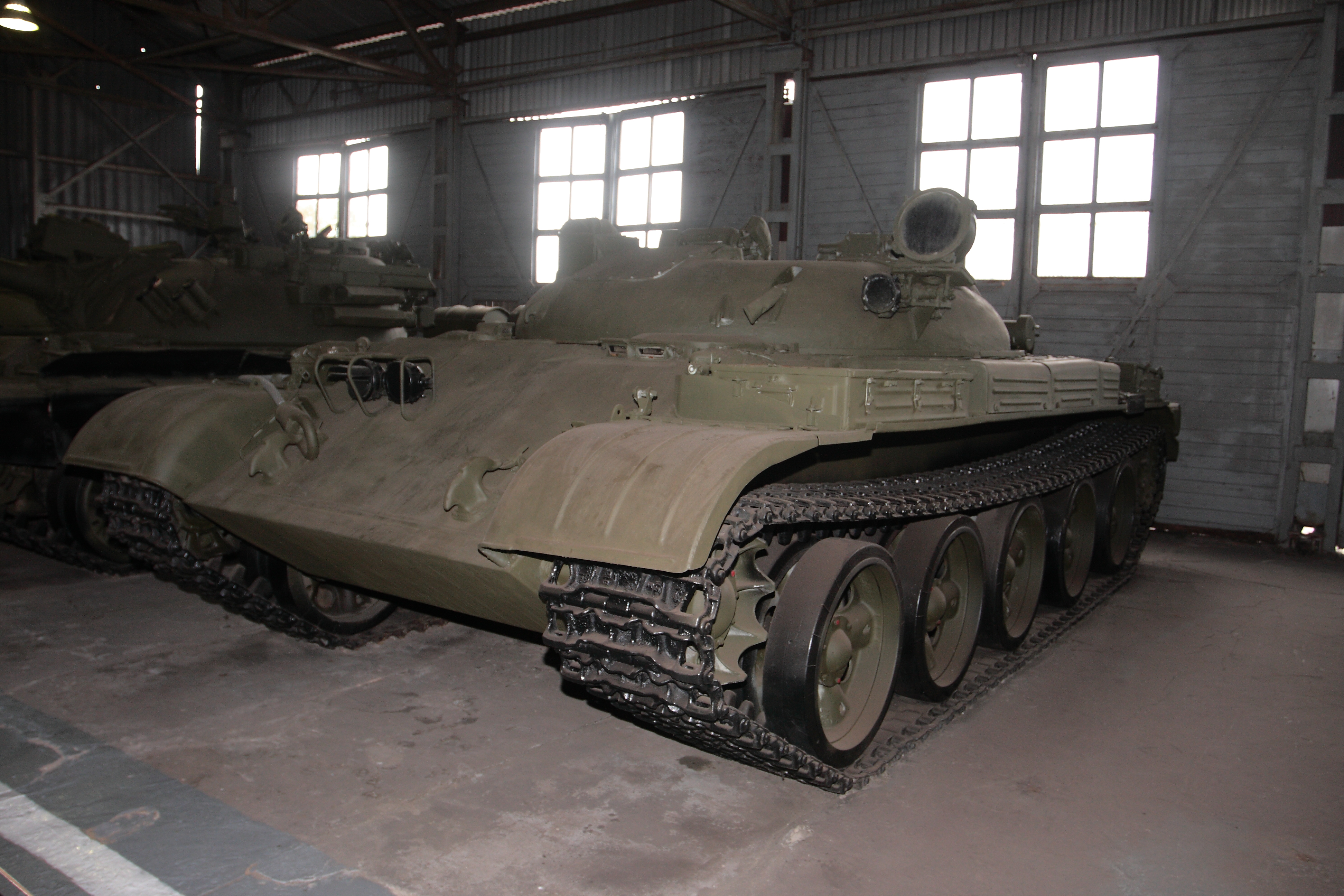IT-1 on:
[Wikipedia]
[Google]
[Amazon]
 The IT-1 (, lit. 'tank destroyer-1') was a
The IT-1 (, lit. 'tank destroyer-1') was a
Article about rocket tanks
Article about the T-62
{{in lang, ru Armoured fighting vehicles of the Soviet Union Anti-tank missile carrier History of the tank Military vehicles introduced in the 1960s
 The IT-1 (, lit. 'tank destroyer-1') was a
The IT-1 (, lit. 'tank destroyer-1') was a Soviet
The Union of Soviet Socialist Republics. (USSR), commonly known as the Soviet Union, was a List of former transcontinental countries#Since 1700, transcontinental country that spanned much of Eurasia from 1922 until Dissolution of the Soviet ...
Cold War missile tank
A missile tank is an armoured fighting vehicle fulfilling the role of a main battle tank, but using only guided missiles for main armament. Several nations have experimented with prototypes, notably the Soviet Union during the tenure of Nikita ...
based on the hull of the T-62
The T-62 is a Soviet main battle tank that was first introduced in 1961. As a further development of the T-55 series, the T-62 retained many similar design elements of its predecessor including low profile and thick turret armour.
In contra ...
. The tank fired specially designed 3M7 Drakon missiles from a pop-up launcher. It saw a very limited service between 1968 and 1970. The large deadzone around the tank created by the missiles' minimum range combined with the limited amount of ammunition carried made it unpopular with the military. Also, the 520 kg of guidance equipment needed for the missile was impractical. Eventually, the tanks were converted into recovery vehicles. A turbine-powered version was also developed named the IT-1T.
History
Object 150 entered production in 1968 with 220 units made between 1968 and 1970. Its purpose was to provide additional firepower to T-62 tanks. It was designated the IT-1 tank destroyer and issued to battalions at Belarus and Carpathian Military Districts, crewed by tank crews and artillery crews respectively. A variant of the IT-1 was made with a turbine engine, designated the IT-1T. In the time period it spent in active-duty, it proved an unpopular vehicle. The low missile count did not sit well with the tank crews and the missiles had a dead zone of around 300–500 meters before the missiles could be guided. The IT-1 was also complicated to use and maintain compared to existing artillery vehicles, a fact that did not sit well with the artillery crews. Though the missile launcher was praised for its long-range accuracy, the IT-1 did not sit well with the overall military situation and was discontinued sometime after its deployment in 1972. The remaining missile tanks in inventory were converted to recovery vehicles. Though the missile tanks concept failed, many more attempts were made to incorporate a missile system as a secondary armament onto Soviet tanks, succeeding with the usage of missiles in the 125 mm smoothbore guns on Soviet tanks past the T-64.Description
The IT-1 had a crew of three, a driver, gunner and commander. It was armed with a pop-up missile launcher fitted into a low profile turret along with a 7.62 mm PKT machine gun with 2000 rounds of ammunition. Twelve 3M7 Drakon missiles were stored in an automatic loader and a further three were stored in an unarmoured box on the back of the turret. Every missile was stored in a storage container in the shape of a long rectangular box. Upon loading of a new missile, a hatch would open on the roof of the turret, with the missile being raised out of the turret by the autoloader. The storage container of the missile would then be jettisoned, allowing the 3M7 Drakon to extend its stabiliser fins, readying the weapon to be fired. The missile was radio-command guided, using any one of seven frequencies and two codes. That prevented vehicles within a single unit interfering with each other. It was launched slightly upward, and at an angle to offset any wind drift during the first second of unguided flight. A tracer on the rear of the missile allowed the guidance system to track the missile and transmit radio commands to the missile. The commands were decoded by the missile and translated into deflection of the missiles fins. To ensure night combat capability, night-vision equipment was provided, but substantially reduced the missile's range.Specifications (3M7 Drakon missile)
* Guidance: RadioSACLOS
Semi-automatic command to line of sight (SACLOS) is a method of missile command guidance. In SACLOS, the operator must continually point a sighting device at the target while the missile is in flight. Electronics in the sighting device and/or the ...
.
* Weight: 54 kg
* Warhead: 5.8 kg HEAT
In thermodynamics, heat is energy in transfer between a thermodynamic system and its surroundings by such mechanisms as thermal conduction, electromagnetic radiation, and friction, which are microscopic in nature, involving sub-atomic, ato ...
* Diameter: 150mm
* Wing span: 860 mm
* Length: 1240 mm
* Range:
** 300 m to 3500 m (day)
** 400 m to 900 m (night)
* Average Speed:
* Max Speed: 224 m/s (804 km/h)
* Penetration: 250 mm versus RHA at 60 degrees
See also
* Taifun, a prototype Russian missile tank system developed during the same period.References
External links
Article about rocket tanks
Article about the T-62
{{in lang, ru Armoured fighting vehicles of the Soviet Union Anti-tank missile carrier History of the tank Military vehicles introduced in the 1960s